Have you got a spare Dish Network antenna lying about? They’re not too hard to come by, either curbside on bulk waste day or perhaps even on Freecycle. If you can lay hands on one, you might want to try this fun radio telescope build.
Now, don’t expect much from [Justin]’s minimalist build. After all, you’ll be starting with a rather small dish and an LNB for the Ku band, so you won’t be doing serious radio astronomy. In fact, the BOM doesn’t include a fancy receiver – just a hacked satellite finder. The idea is to just get a reading of the relative “brightness” of a radio source without trying to demodulate the signal. To that end, the signal driving the piezo buzzer in the sat finder is fed into an Arduino through a preamp. The Arduino also controls stepper motors for the dish’s azimuth and elevation control, which lets it sweep the sky and build up a map of signal intensity. The result is a clear band of bright spots representing the geosynchronous satellites visible from [Justin]’s location in Brazil.
Modifications are definitely on the docket for [Justin], including better equipment that will allow him to image the galactic center. There may be some pointers for him in our coverage of a tiny SDR-based radio telescope, or from this custom receiver that can listen to Jupiter.
Continue reading “See Satellites With A Simple Radio Telescope”

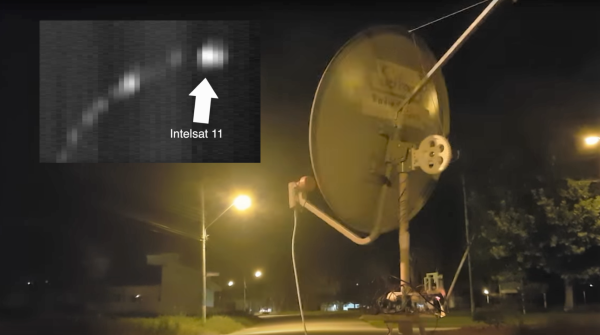


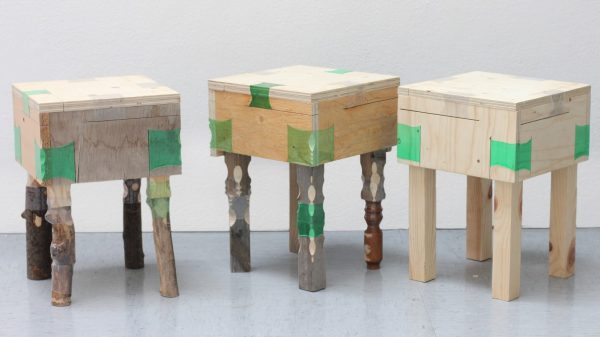


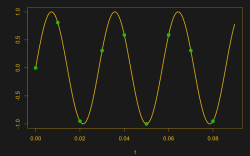

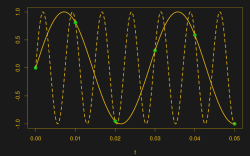
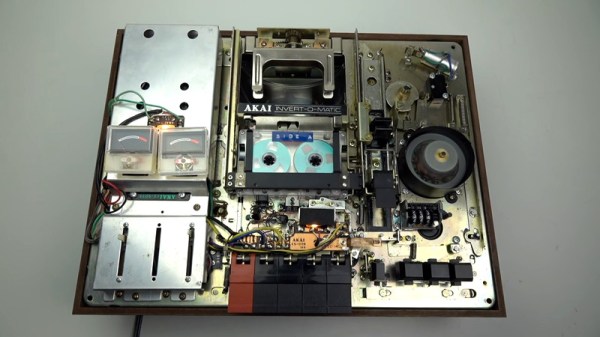
 Towards the end of the cassette era, most manufacturers had decided on a relatively simple system of having the head assembly rotate while reversing the motor direction. Many years prior to this, however, Akai’s system involved a shuttle which carried the tape up to a rotating arm that flipped the cassette, before shuttling it back down and reinserting it into the deck.
Towards the end of the cassette era, most manufacturers had decided on a relatively simple system of having the head assembly rotate while reversing the motor direction. Many years prior to this, however, Akai’s system involved a shuttle which carried the tape up to a rotating arm that flipped the cassette, before shuttling it back down and reinserting it into the deck.








